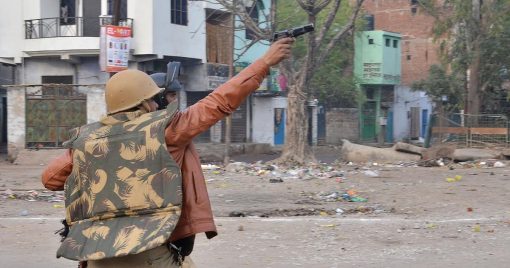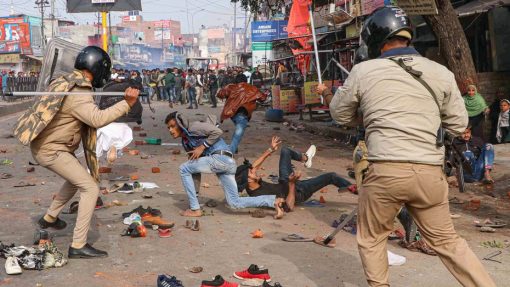
A delegation of students from various universities across the country—which has travelled to UP to take stock of the situation on the ground—narrated what they have found out during their visit in the national capital on Wednesday. After meeting the victims of violence, allegedly perpetrated by the Uttar Pradesh Police during the protests against the Citizenship Amendment Act, the students released their fact-finding report which listed the victim families and included their testimonies as well.
They alleged that the magnitude of the violence only swelled after the local leaders of the Bharatiya Janata Party (BJP) assisted the police in raiding the areas where protests were being organised.
Addressing the reporters in the national capital, Ananya, a student of Delhi School of Social Work, said that the police did not conform to the rules while dispersing the crowd. She said, “When we met the family members of the victims, they said that the police sat on their knees and deliberately shot people above the waist to ensure maximum casualty. Families of the victims were even told to wrap up the burial within half an hour. They were also not allowed to call their relatives to perform the last rites.”
Trithi Das, a student of Delhi University, referring to the killings in Meerut [Western UP], said that the hospitals did not attend the injured who ultimately succumbed to their injuries. She said, “Asif, a daily wage labourer, is one among the six who were shot dead during the violence that ensued during a silent protest organised after Friday prayer at Jama Masjid, Meerut, on December 20, 2019. He was a resident of Lisari, Meerut (Uttar Pradesh). When he was taken for treatment, two hospitals including the City Hospital refused to admit him, as the hospitals were directed to not take up cases in which people were injured due to the violence erupting in protests.”
She added, “He was declared dead at government hospital because of massive blood loss. Later, his post-mortem was done, but his family did not receive its report.”
Questionable Role of Local Leaders
The report stated that the local leaders of the BJP assisted the Police in targeting the protesters. Report noted, “At Meenakshi Chowk [in Muzaffarnagar] on December 20, 2019, people gathered to stage a peaceful demonstration against the CAA-NRC and the violence that took place in Jamia Millia Islamia. Initially, the police extended their cooperation to the protesters until the Minister of State, Government of India, Sanjeev Baliyaan appeared on sight with a mob. He stood with the police and repeatedly wanted to intervene to suppress the peaceful gathering. A shot was fired first from the mob headed by Sanjeev Baliyaan which instigated the violence leading the police to take action against the protesters.”
It added, “Following that, the police lathi charged, rat chased and fired at the protestors. Noor Mohammad, a resident of Muzaffarnagar, was shot dead in police firing. The crowd started to run towards Mahavir Chowk. Some entered Sadat Hostel from where Maulana Asad Raza Hussani along with over 38 students were detained and brutally beaten by the police, and the people standing outside the hostel chanted slogans like ‘Jai Shree Ram’, ‘UP Police Zindabad’, etc.”
Similarly, BJP leader Maninder Singh was seen distributing batons (the ones used by the police) to the mob in Meerut, claimed the report.

Local Media
Akash, a student of Indian Institute of Mass Communication, Delhi, said that coverage of local media, particularly Hindi newspapers, is widening the divide among the communities by misreporting the events. He said, “We saw several reports where the local newspapers did not even bother to go and meet the victims before labelling them as ‘rioters’. Our team also met a 14-year-old boy who was beaten mercilessly by a group of three men wearing helmets. A few days later, we found that two of them were cameramen; whereas, the other person was a reporter working for a local media channel. How can you trust their reports?”
Manish Sharma, activist and a resident of Banaras, told NewsClick that the language of the reports in prominent Hindi newspapers reflects their bias. Talking to NewsClick, he said, “We see that the police have booked thousands of unnamed people. The newspaper are printing the names of people with their full address. With this sort of reporting, they are instigating people to take law in their hands. Whether a person is guilty or not, it has to be decided in the court, not in newspapers.”




